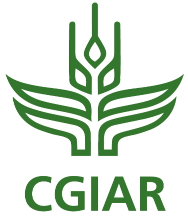Technological transformation, the bet to increase rice yield in Panama

Through a FLAR pilot project, the country could achieve self-sufficiency in one of the most important items on the Panamanian table. For Eduardo Graterol, executive director of the Latin American Irrigated Rice Fund (FLAR), Panama has the potential to increase rice yields in the short, medium term, by 20%, 30%, and more in the long term, or by 50%. % or more.
He pointed out that dryland yields in the country are low, even compared to other countries in the region, so he is perhaps talking about 80, 90 quintals per hectare, and for some producers a little over 100 quintals per hectare.
Graterol resaltó que si el país realiza mejoras en el proceso de cultivo, desde la adecuación de los suelos hasta todo el manejo agronómico y cosecha se puede obtener rendimientos por encima de los 120, inclusive 130 quintales en secano. Mientras que en riego, los rendimientos podrían alcanzar incluso los 200 quintales por hectárea, con un promedio de unos 150, 160 quintales.
The expert maintains that with “global food vulnerability, due to the impact of climate change, – which affects the prices of agricultural products along with other factors that affect supply chains -, technological transformation can be an opportunity that allows “Panama achieve self-sufficiency in rice production.”
“In Panama last year and even this year the effect of high temperatures has been evident, not only in agriculture but in people’s lives, and this is resulting in lower agricultural and livestock production, and has also “implied effects on the quality of the products and the costs, because under these conditions the cost of food increases due to the reduction of areas and the scarcity of products,” explained Graterol, during a training session of the National Bank of Panama, with the underlying theme: “Climate Change, Mitigation in Agriculture
Among the factors that affect supply chains, the specialist also mentioned agricultural policies, not only of the country, but of other countries that supply food, and which ultimately end up affecting buyers, and, in addition to specific effects, such as climate crisis, the crisis of war, or abnormalities in logistics chains.
During the training, the specialist presented the pilot project to transform rice production in Panama, with a view to producing more rice with fewer inputs, and to make better use of resources, including water.
“It is a proposal that we are making to the country, where rice is a fundamental food, and the National Bank gives us the opportunity to make the proposal known and to manage the necessary resources to be able to implement the project in this country,” he said.
For the 2023-2024 agricultural year, Panama is scheduled to plant 92,757 hectares, with the participation of 1,680 producers, with a harvest projection of 437,106 metric tons, that is, 9,616,332 quintals, with an average yield of 104 quintals per hectare.



